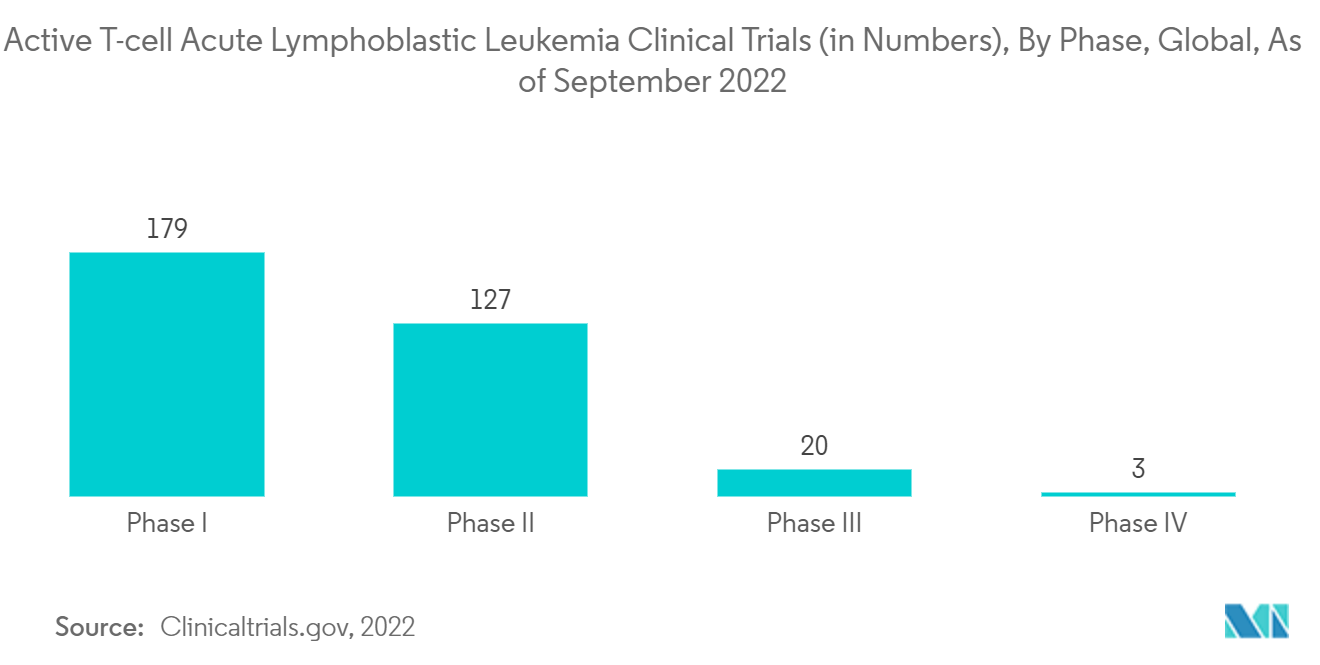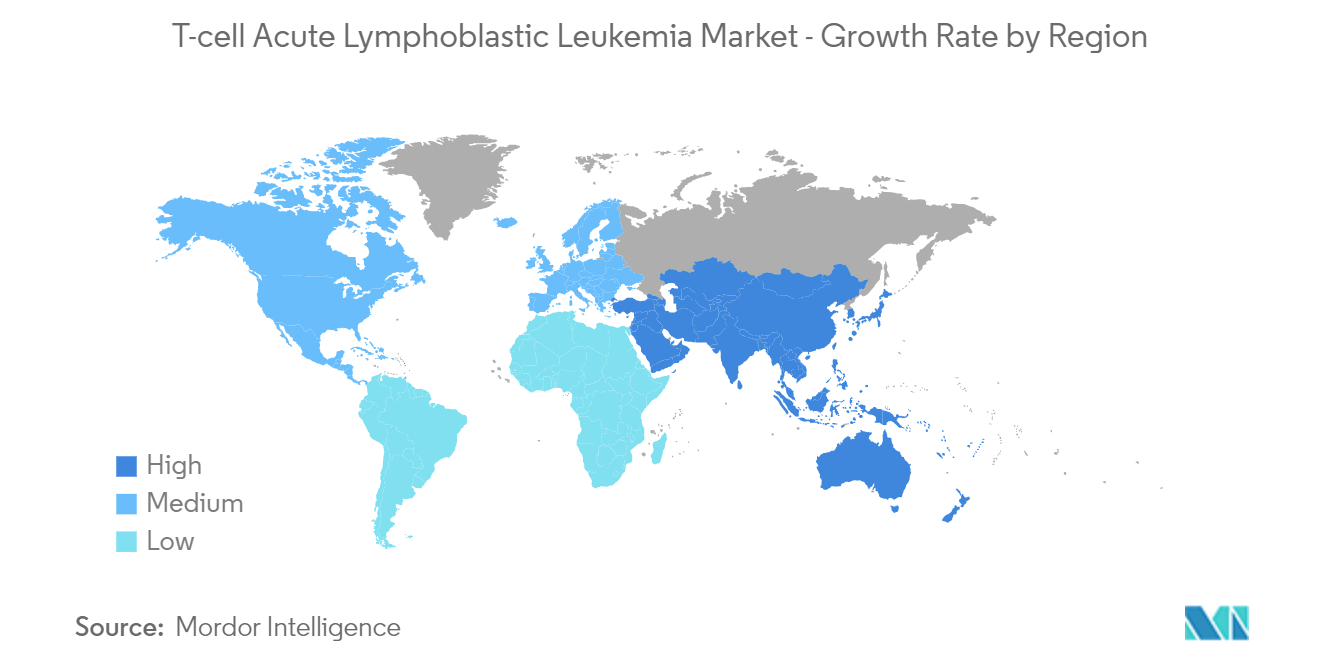Market Trends of Global T-cell Acute Lymphoblastic Leukemia Treatment Industry
This section covers the major market trends shaping the T-Cell Acute Lymphoblastic Leukemia Treatment Market according to our research experts:
Chemotherapy Segment Expects to Register a High CAGR Over the Forecast Period
The chemotherapy segment is expected to witness significant growth in T-cell acute lymphoblastic leukemia over the forecast period owing to the factors such as the rising prevalence of t-cell lymphoblastic leukemia, and increasing usage of chemo-drugs in the treatment.
According to an article published in May 2021, titled 'The New Therapeutic Strategies in Pediatric T-Cell Acute Lymphoblastic Leukemia', the patients with newly diagnosed T-ALL are currently treated with intensive chemotherapy, which has been occasionally supplemented with cranial radiotherapy (CRT). Additionally, as per an article published in August 2020, titled 'Children's Oncology Group AALL0434: A Phase III Randomized Clinical Trial Testing Nelarabine in Newly Diagnosed T-Cell Acute Lymphoblastic Leukemia', it has been observed that the addition of nelarabine to augmented Berlin-Frankfurt-Muenster (ABFM) therapy increased disease-free survival (DFS) without increasing toxicity in children and young adults with newly diagnosed T-ALL. This is expected to have a positive impact on the studied market growth over the forecast period.
Thus, owing to the aforementioned factors, the market is expected to grow significantly during the forecast period.

North America Dominates the Market and Expects to do Same Over the Forecast Period
North America is anticipated to witness growth over the forecast period and dominate the market. Among other countries in the region, the United States is leading the market due to high healthcare expenditure, research and development activities, and a rising prevalence of T-cell acute lymphoblastic leukemia.
The rising burden of acute lymphoblastic leukemia is the key factor driving the market growth in the region. For instance, as per the 2022 statistics published by the American Cancer Society, about 6,660 new cases of ALL (3,740 in males and 2,920 in females) are expected to be diagnosed in the United States in 2022. In addition, as per the same source, approximately 1,560 deaths from ALL (880 in males and 680 in females) are expected to be reported in the United States in 2022. Thus, the increasing number of acute lymphoblastic leukemia is expected to increase the risk of developing T-cell acute lymphoblastic leukemia in patients which in turn is anticipated to increase the demand for effective and safe drugs and other treatment options for treating patients with t-cell acute lymphoblastic leukemia.
In addition, according to the Organization for Economic Co-operation and Development (OECD), in June 2022, United States healthcare spending in 2021 was 17.8% of the total GDP of the country and Mexico's health spending as a share of GDP was 6.2% in 2020, This is expected to positively impact market growth. Additionally, as per the Centers for Medicare and Medicaid Services, National Health spending is projected to grow at an average annual rate of 5.4% for 2019-2028 and to reach USD 6.2 trillion by 2028. As national health expenditure is projected to grow 1.1% points faster than gross domestic product per year on average over 2019-2028 the health share of the economy is projected to rise by 19.7% in 2028.
Thus, owing to the aforementioned factors, the market is expected to grow significantly during the forecast period.


